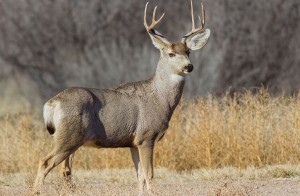Almost 40 percent of the United States is thirsty, according to the U.S. Drought Monitor, with lack of rain and snow contributing to a mounting problem.
The USDM, located at the University of Nebraska-Lincoln, says approximately 38.4 percent of the country including Alaska, Hawaii and the Puerto Rico territory currently is affected by the ongoing drought. Seems difficult to imagine Alaska or Hawaii not having enough snow or rain, but parts of each state are having issues.

Deer and other wildlife may be feeling the impacts of the drought gripping much of the United States. (Photo courtesy iStock)
On the mainland, there's less rain and snow along the West Coast and parts of the western mountain ranges, and little rain in the Southwest and Southeast. All this presents potential problems with more wildfires like those last year in southern California and impacts on winter crops. The drought also can impact vegetation needed by wildlife, such as mast-producting trees and seed-bearing plants.
Remember that whole "circle of life" thing from elementary school? That's in play here, too. Lack of water can reduce forage, which impacts big and small game, the latter of which can impact predators, and in areas where streams, creeks or smaller rivers dry up the animals begin roaming to search for water. Or they die. Maybe both. Drought also obviously affects aquatic creatures and fish, too.
What does it matter? It matters a lot for economics and the environment in the country. More rain, or normal rain, would be the best scenario.
How about deer, turkeys, predators and other wildlife? Deer in several states including Ohio, West Virginia, parts of eastern Kentucky, eastern Tennessee and others experienced some deaths from epizootic hemorrhagic disease last summer. It's a common disease in the whitetail world, and we usually see more of it in drought years.
We haven't seen any other news about drought-related wildife problems yet but are monitoring the situation.






